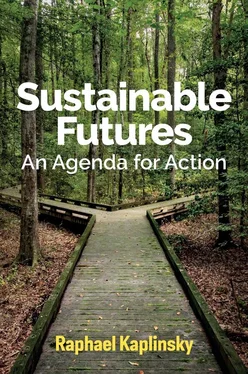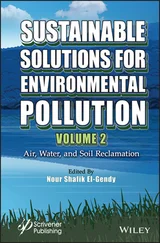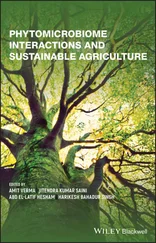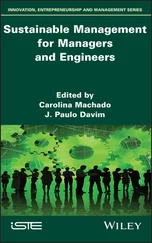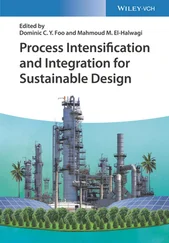ISBN-13: 978-1-5095-4782-1
ISBN-13: 978-1-5095-4783-8 (pb)
A catalogue record for this book is available from the British Library.
Library of Congress Cataloging-in-Publication Data
Names: Kaplinsky, Raphael, author.
Title: Sustainable futures : an agenda for action / Raphael Kaplinsky.
Description: Cambridge, UK ; Medford, MA : Polity Press, 2021. | Includes bibliographical references and index. | Summary: “How to steer the economy and society to a more sustainable future”-- Provided by publisher.
Identifiers: LCCN 2020053493 (print) | LCCN 2020053494 (ebook) | ISBN 9781509547821 (hardback) | ISBN 9781509547838 (paperback) | ISBN 9781509547845 (epub) | ISBN 9781509548439 (pdf)
Subjects: LCSH: Sustainable development.
Classification: LCC HC79.E5 K3644 2021 (print) | LCC HC79.E5 (ebook) | DDC 338.9/27--dc23
LC record available at https://lccn.loc.gov/2020053493
LC ebook record available at https://lccn.loc.gov/2020053494
by Fakenham Prepress Solutions, Fakenham, Norfolk NR21 8NL
The publisher has used its best endeavours to ensure that the URLs for external websites referred to in this book are correct and active at the time of going to press. However, the publisher has no responsibility for the websites and can make no guarantee that a site will remain live or that the content is or will remain appropriate.
Every effort has been made to trace all copyright holders, but if any have been overlooked the publisher will be pleased to include any necessary credits in any subsequent reprint or edition.
For further information on Polity, visit our website: politybooks.com
To my grandchildren (Arlo, Kika, Eva and Cam), to my children and their partners (Natasha, Ben, Justin and Nichole) who made them for us, to my godson (Kian) and, of course, to all the grandchildren of the world
In memory of my parents, Morris and Becky, with love and gratitude for building the platform on which our family stands, and to Cecil, who left us too early
2.1 The expansion of Gross Domestic Product, 1961–2018: World, US and Europe (% per annum)
2.2 Share of investment in equipment and other physical assets (Gross Capital Formation) in GDP
2.3 Annual growth of labour productivity, 1951–2019
2.4 Balance of payments: largest debtor and surplus economies, 1998–2019 ($m)
2.5 Corporate tax rate: France, Germany, US, UK, Japan and Sweden, 1981–2019 (%)
3.1 Top 1% personal wealth share in emerging and rich countries, 1913–2015
3.2 Changes in global inequality, 1980–2016
3.3Share of labour in total national income, high-income economies, 1960–2012
3.4aLife-expectancy and inequality, 22 OECD economies
3.4bLife-expectancy and inequality, 50 US States
3.5Health and social problems and degree of inequality, inter-country differences
3.6Index of status inequality and degree of inequality
3.7Index of social participation and degree of inequality
3.8Index of civic participation and degree of inequality
3.9Belief in conspiracy theories, US and UK
3.10Inflows of migrants, selected high-income economies, 2006–2016 (millions)
3.11Immigrant share of population and far-right voting
4.1The Holocene in historical perspective: not just warm temperatures but stable temperatures
4.2The Great Acceleration
4.3Take, Make, Use and Waste
4.4Energy equivalent global output of different energy forms, 1800–2019 (terawatt hours)
4.5The growth in global total resource supply, 1970–2010 (million tonnes)
4.6Index of energy efficiency in the EU, 1990–2014 (1990 = 100)
4.7Variation of CO 2emissions from transport in the EU, 1990 and 2010 (million tonnes energy equivalent)
4.8US advertising expenditure, 1990–2017 ($m)
4.9Rising frequency of natural disasters, 1980–2007
5.1Six phases of techno-economic paradigms
5.2US corporate profitability as share of domestic income, 1951–1966 and 1966–1990 (post-tax profits as a share of domestic income, %)
5.3US corporate profitability as share of domestic income, 1990–2007 (post-tax profits as a share of domestic income, %)
6.1Six phases of techno-economic paradigms
7.1Broadband connections per 100 inhabitants, 2005–2018
7.2The global share of different energy sources, 1971–2014
7.3Frequency and cost escalation of electricity infrastructure projects (based on analysis of 411 projects)
7.4The Zambezi river basin
7.5Global average annual net capacity additions by energy source
7.6Wheat and barley crop yields in UK agriculture, 1948–2017 (tonnes/hectare)
7.7Sources of productivity growth in UK agriculture, 1973–2017 (1973 = 100)
7.8‘Tom’ gathering data on soil and weeds
8.1Levels of circularity: the 10 Rs
8.2Total UK tax receipts, 2018–2019 (£bn)
2.1 Average annual economic growth rates: World, US and Europe (%)
3.1Extent and character of migrant inflows in ten high-income economies
4.1Range of approximate CO 2emissions per unit of electricity produced, different sources of energy (grammes CO 2/kWh)
4.2Projected impacts of global warming at increase of 1.5 °C and 2 °C
5.1Post-tax wages in global economies, March 2009 ($)
I decided to write this book after returning from a wonderful family summer vacation in September 2018.
Looming over the warm afterglow of the holiday was the spectre of a damaged and increasingly unsustainable world. Donald Trump was two years into his malign disruptive Administration, threatening safety and livelihoods not just in the US, but across the world. It was increasingly clear that the UK was descending into a narrow tunnel in which delusions of past imperial grandeur, coupled with rising xenophobia, fuelled an insular and destructive nationalism. In my country of origin, South Africa, ‘state capture’ had led to the looting of state coffers by a predatory and opportunistic new elite. In Brazil, President Bolsonaro was following in the footsteps of his mentor, Donald Trump, and in the slums of the Philippines, police were encouraged to shoot on sight. If that wasn’t enough, climate change and global warming were accelerating at an alarming rate.
Out of my post-holiday depression was born a desire to contribute in some small way to finding a solution to these societal ills. This book is an attempt to identify a path which might help us to get out of the mess in which we find ourselves. Learning from history, it is not inevitable that our worlds collapse into increasing unsustainability. To the contrary, there are credible reasons for optimism, and this is the furrow which I plough in this book.
Out of crisis comes opportunity. It is possible to rebuild a more sustainable world by taking advantage of the potential offered by a new socio-economic paradigm. The lives of all of our grandchildren – to whom this book is dedicated – demand that we do so.
Читать дальше
